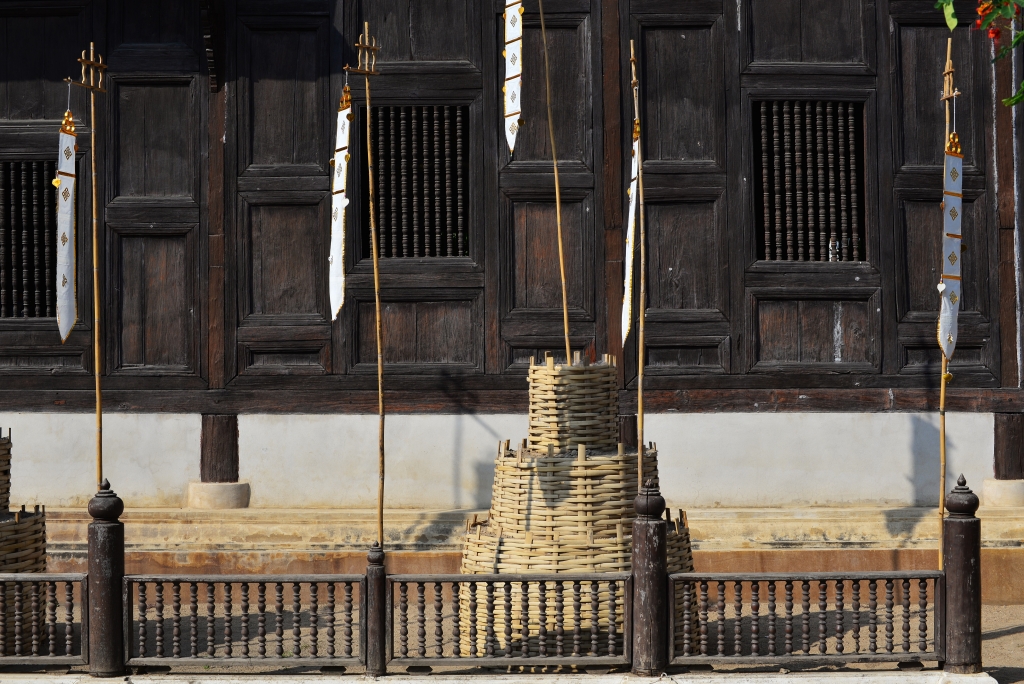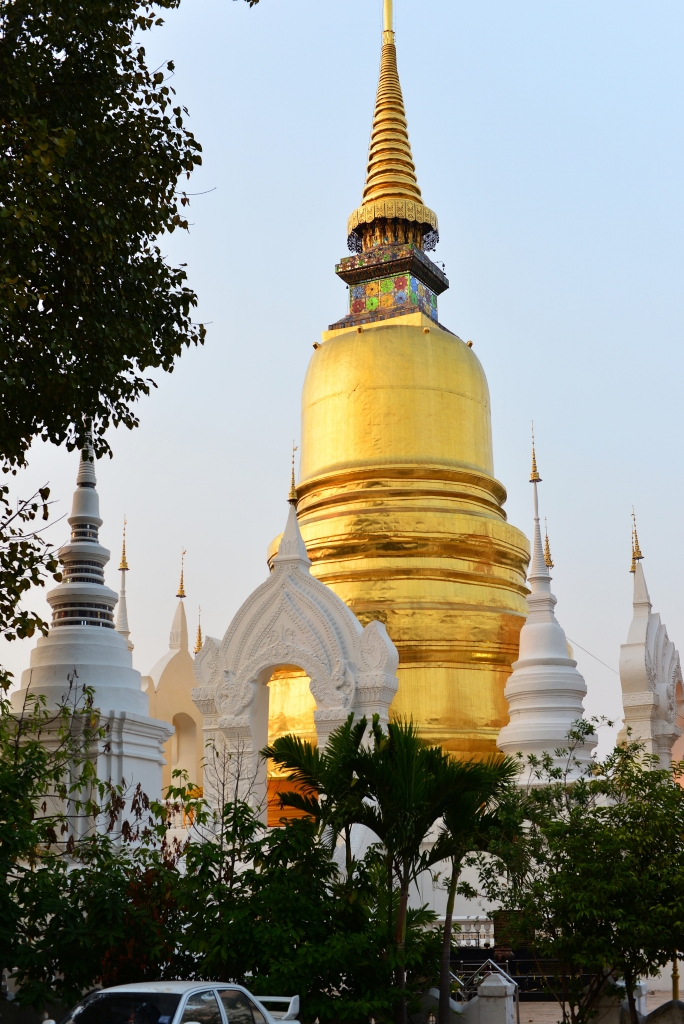February 2nd, 2015
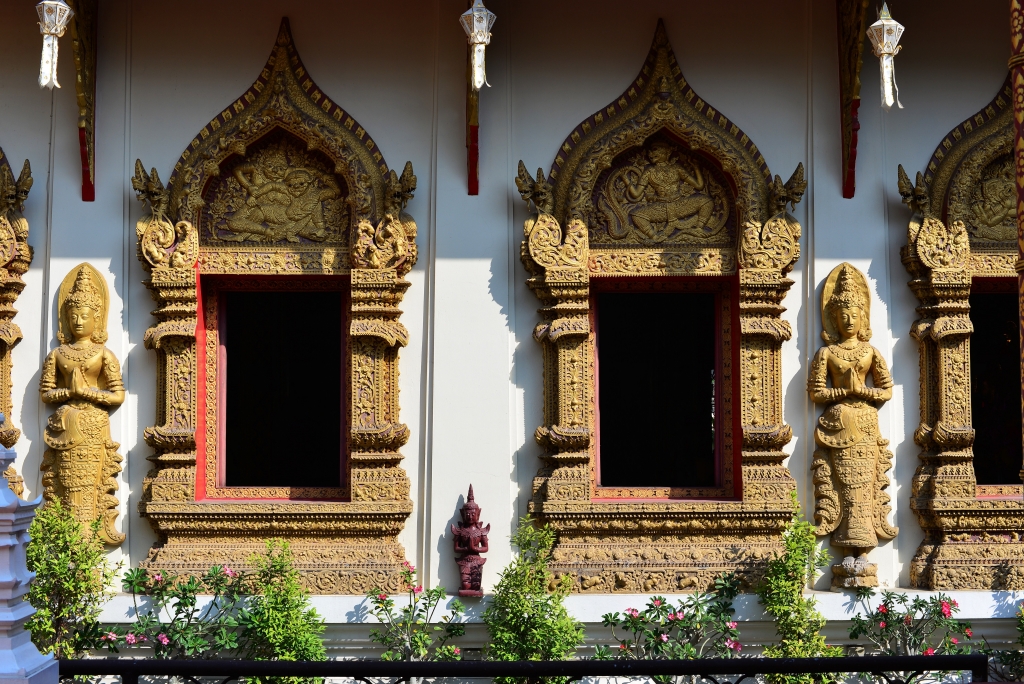
Waking up from my deep slumber in the appropriately-themed Jurassic room, then rushing into the breakfast room to have my faux American breakfast before the cutoff at 10 am, the server actually looking at his watch to check whether I am not too late. Two groups of younger women sit at other tables, and like yesterday, there is a very young child absolutely obsessed with the idea of running out of the building onto the small wooden footbridge that connects the restaurant with the decommissioned cafe and watch the colourful carp swim back and forth. Unfortunately some of the banisters are broken and I can just see something very unfortunate occurring.
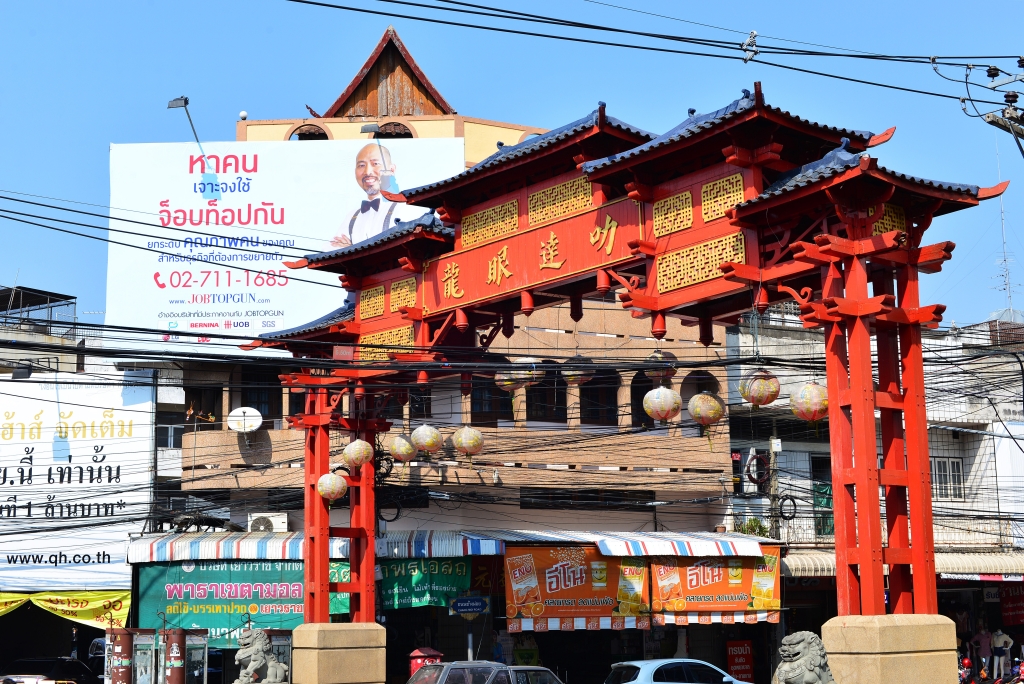
I had been thinking of switching rooms due to the bad internet connection, but the Jurassic theme really is the coolest. On the other hand, the possibility of changing from one utterly unique and somewhat surreal theme to another is the big attraction of staying here. Three weeks into my trip, the bag of laundry has gotten quite big, and it is time to get a wash out of the way, given that I will be in Chang Mai a longer time. When I finally finish my journal writing, web surfing and laundry washing effort, I leave much later than I had intended, but still much earlier than yesterday. Oh well, I have a lot of extra time to kill in Chiang Mai …
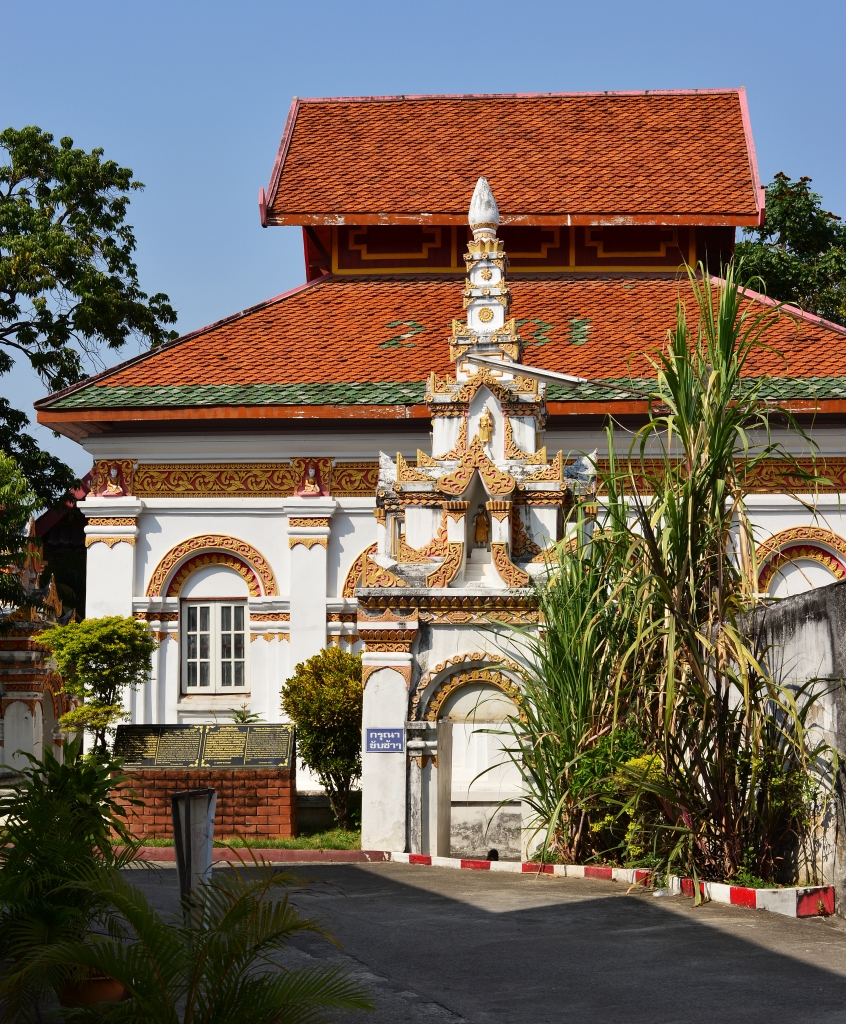
The wait for the blue songthaew along the side of the road is perhaps 10 minutes, then seated cramped in the back with the schoolgirls, I get the full brunt of the incredible air pollution that dominates the city. The vehicle continues north on Lamphun road until one of the principal bridges, then heads westward toward the Tha Pae gate, where I disembark and fall immediately into the hands of a small roadside coffee matron and her Danish/Thai friends seated next to the next. Inspired by the first coffee of the day, I subject the Dane to a rant about the marvels of Denmark and Scandinavia in general, which he patiently listens to, although when he does remove his sunglasses his pained expression is obvious enough.
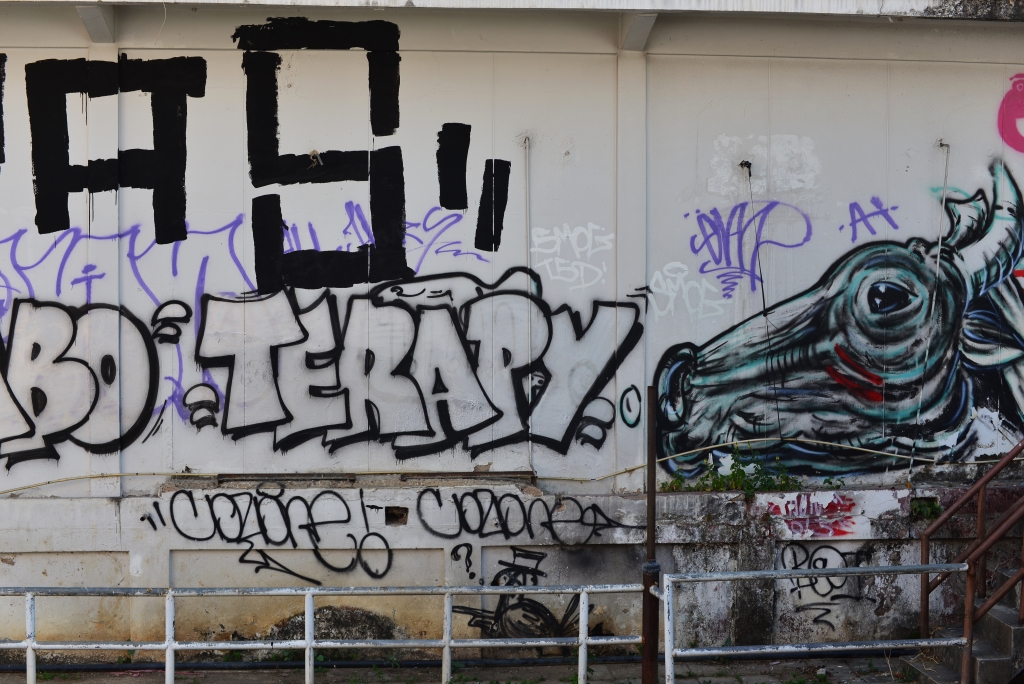
My plan today is to explore as many of the temples of primary importance located in central Chang Mai as possible, although that could quickly lead to a sense of overkill, as dramatic as they may be. Buddhist temples are always draped in brilliant colours, dominantly red and gold, with giant swooping gables and incredibly ornate decorative features, so at a certain point it becomes difficult to even focus one’s eyes on yet another one.
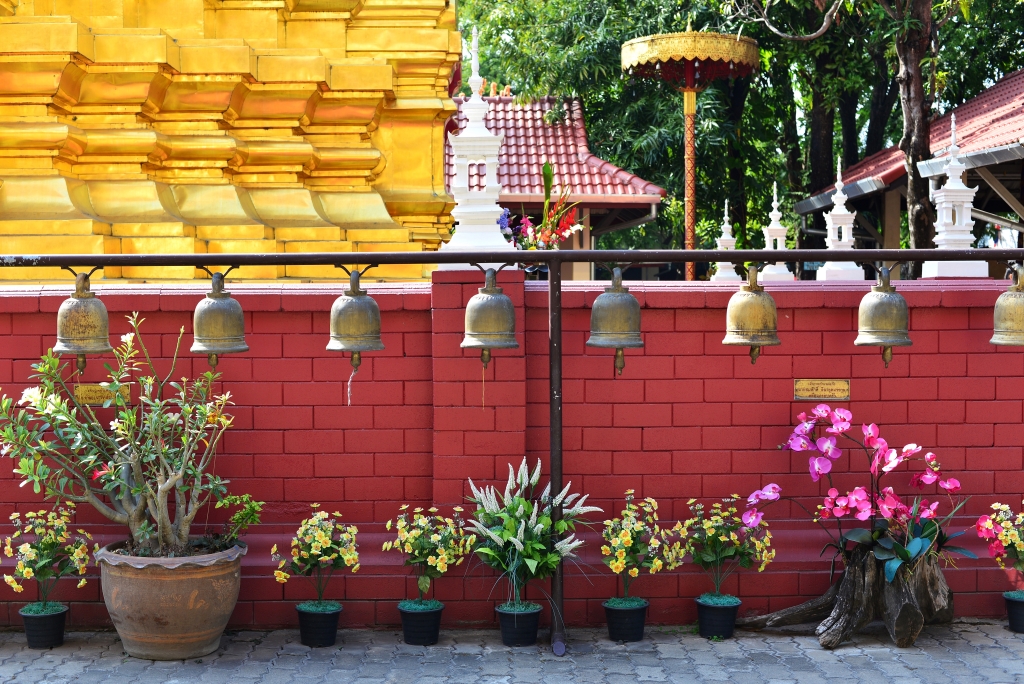
The initial stimulus is provided by the Wat Bupbharam on the Tha Phae road. The heavily walled Wat San Fang is closed again today, possibly permanently. The nice thing about Buddhist temples is that they are open from dawn to dusk, sometimes even well into the night, the principal temples in the country typically atmospherically illuminated. I follow the encircling road towards Chang Moi road, which in turn arcs through a shabby retail and workshop area to the canal just above the Tha Phae gate. I see a Chinese-style gate – I wonder if it marks the entrance to the town’s Chinatown?
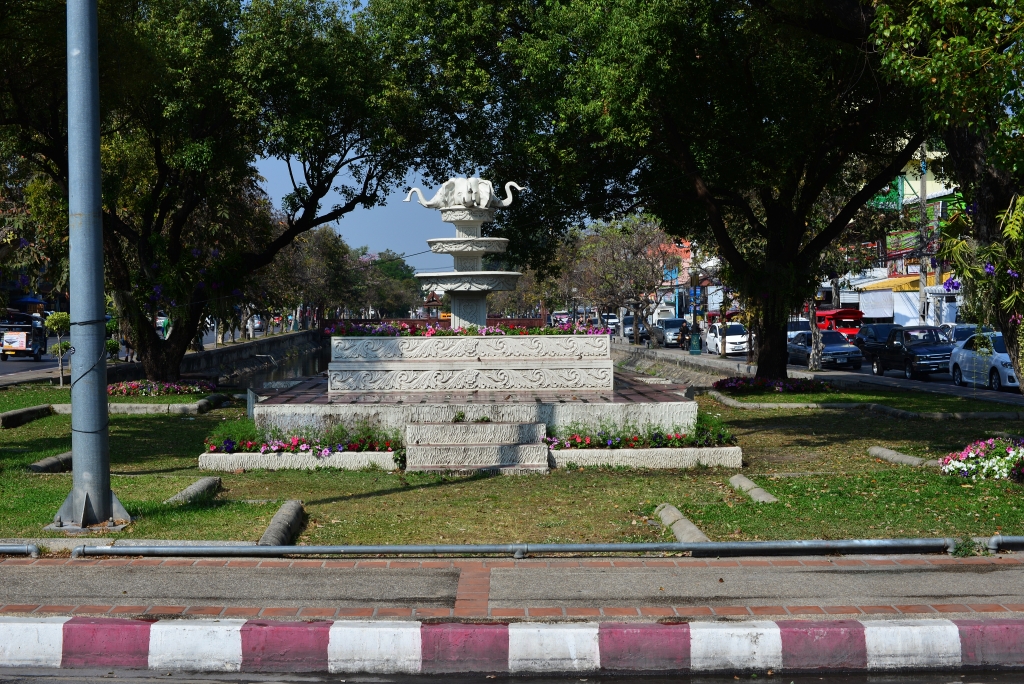
Chiang Mai’s tourist-friendly facade blossoms on the roads running along the eastern canal, replete with the big American chains, restaurants flogging American food, bars, cafes, massage parlours, street vendors attempting to cash in on the bounty, young locals dressing up the trees that line the plaza near the gate with floral arrangements, a portion of the plaza blocked off with a stage and tiered seating. And yet the canal also offers some sense of respite from the onslaught of traffic and general mayhem in the inner city.

The city definitely comes across as completely different without the orgiastic market spreading its tentacles through the entirety of the town centre, the experience of wandering along the relatively narrow Thanon Rachadamnoen evoking a serenity that was all but absent yesterday. The grandeur of the Lanna-styled temples complement the boutique hotels and fashionable restaurants, the blocks focusing on the ancient Wat Chedi Luang the epicenter physically and culturally of the city.
As alluring as the eateries and cafes are, you can only drink so much coffee, and restaurants only make sense when you are hungry, and haven’t been continually indulging in the plethora of inexpensive options presented by the roadside vendors, be it grilled bananas, stuffed miniature empanadas, fried chicken, or home-made ice cream.
The larger temple complexes seem to consist of a number of subsidiary temples that are housed under one name, but may have been built over different eras. The essential structures on display date back at most several centuries, the more important ones characterized by the usual claptrap of housing Buddha’s relics. If Buddha’s relics really were present in all the temples that claimed their possession, then he must have been a man of extraordinary proportions.
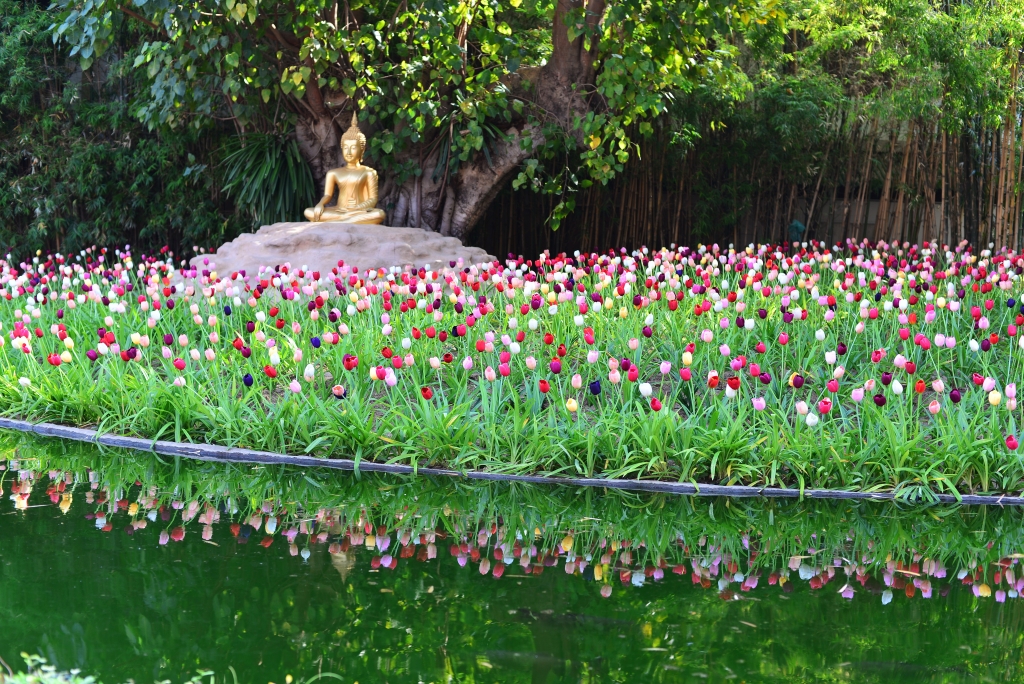
Unlike Ayutthaya and Sukhothai, the single ancient structure remaining in Chiang Mai is the partially restored giant stupa at Wat Chedi Luang, the attraction for the tourist really just being the stunningly decorated fascias of the large structures, the symmetrical golden patterning, the elaborate golden decorative frames of tall, pointed arched windows running the length of the buildings, and their steep, terracotta layered roofs. The visitor is able to amble thoughtfully through the grounds of the temples and take in the beautiful structures at leisure, although somewhat amusingly you can see the western tourists struggling to dignify the apparently sacred nature of the structures. Except if you are not Buddhist, how can this have any fundamental meaning to you other than the aesthetic?
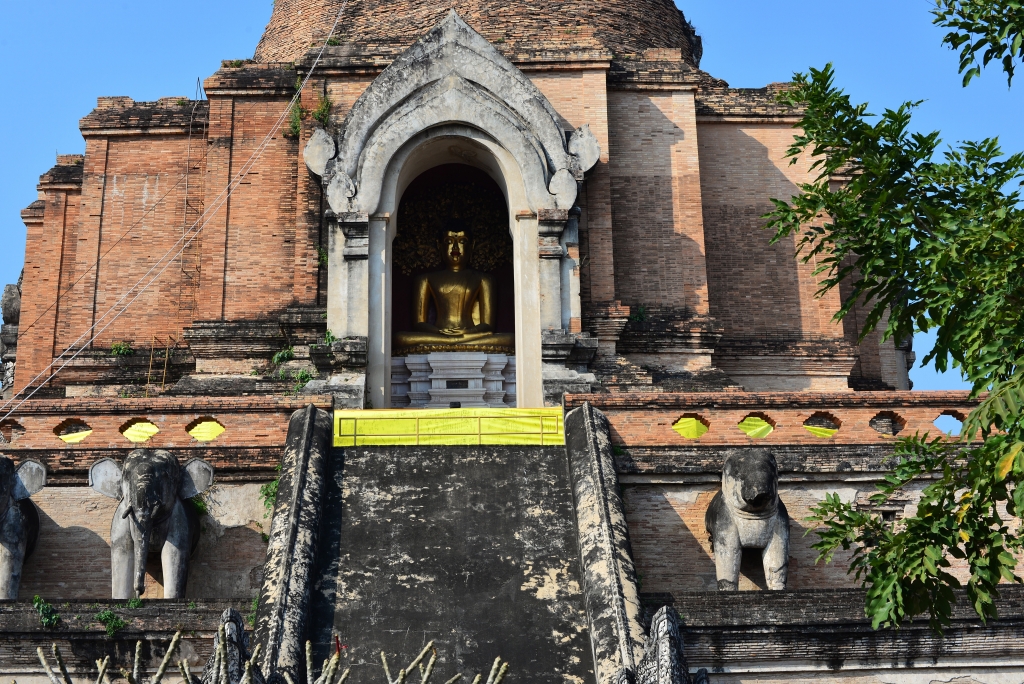
No admission need be paid anywhere, although the desire for donations is clearly expressed, no clearer than at the bathrooms servicing the Wat Chedi Luang, where guests are expected to remove their shoes and put washroom-specific sandals, then follow a strict and somewhat hilarious protocol for using the facilities. Perhaps it seems surprising in a country where otherwise so much is tolerated …
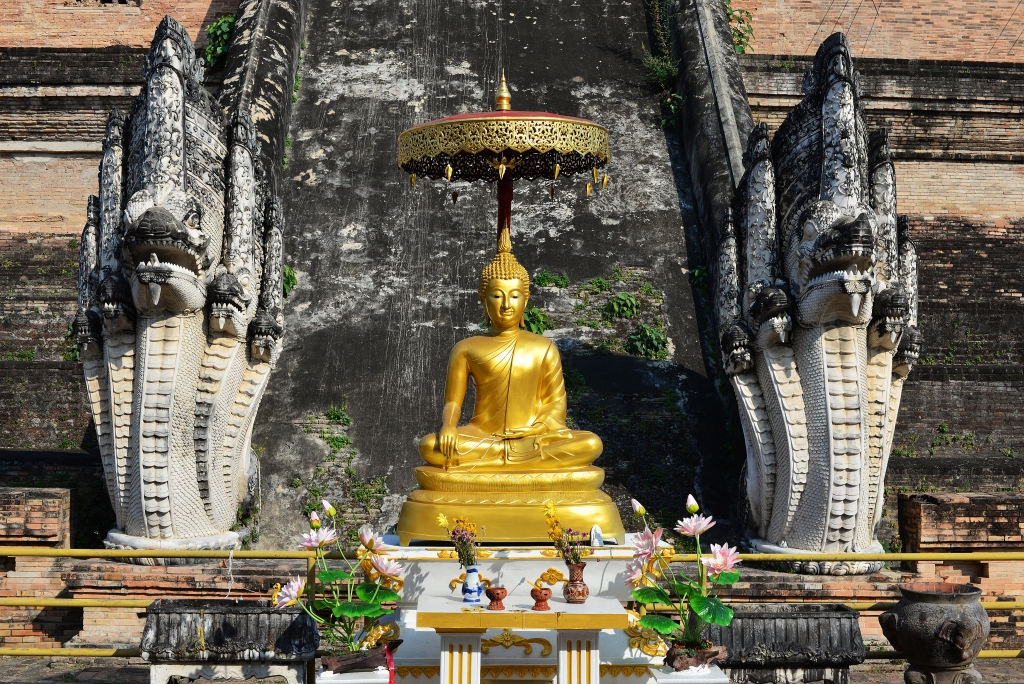
There serenity of Thanon Rachadamnoen ends at Wat Phra Singh, beyond which the core area is reduced to far grimier and weatherworn abodes with little to attract tourists, although there is an endless stream of farang zipping back and forth on motorcycles to the more remote enclaves of the city. A regular stream of red songthaews traverses the length of Thanon Rachadamnoen, with no blue ones in evidence. I may have to walk all the way back to the Warorot market on the east side of town to catch a blue songthaew back to the hotel, provided they are evening running later on.
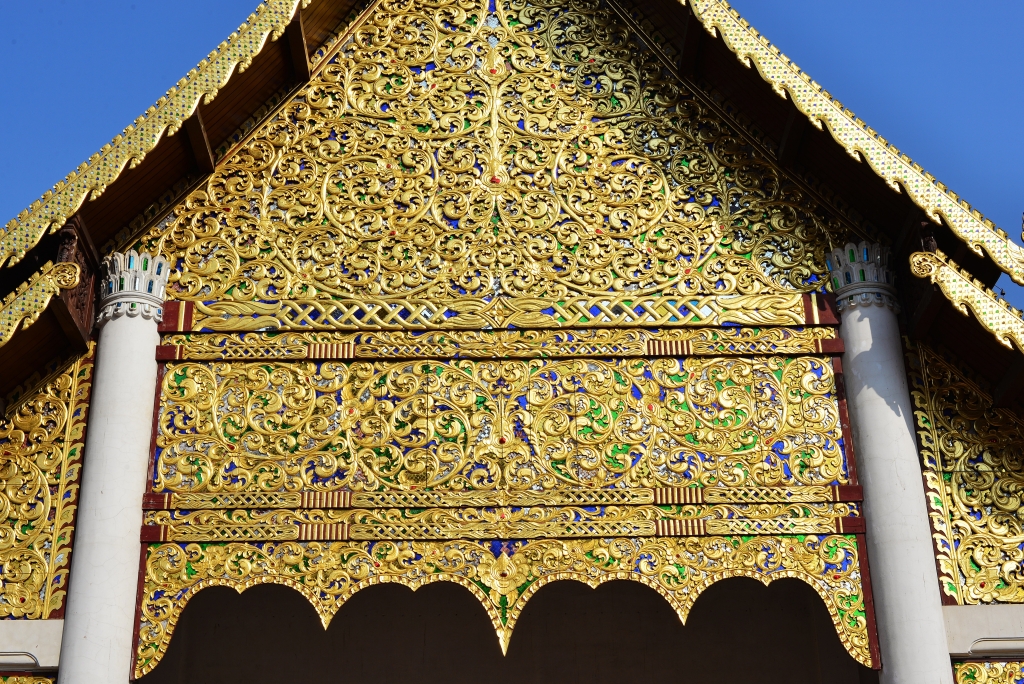
My next destination is the fashionable Thanon Nimmanhaemin, where the bulk of trendy cafes and bars in Chang Mai is apparently located. Through the Suan Dok gate and the morass of traffic running along the city’s western canal, then further onto Thanon Suthep, the shimmering temples of the centre are replaced by the ponderous cement monstrosities in which several hospitals and university medical faculties are located. There is one exception, the bulky Wat Suan Dok, with its golden dome and tightly-knit embracing arches, as whitewashed as are the small stupas arranged on the grounds of the royal graveyard.

Dogs are scattered across the grounds of the temple, rousing themselves and looking suspiciously at any visitor. Jets shoot up into the sky as dusk falls over the city. Street vendors abound in the area, which means largely walking on the street, as the sidewalks are effectively blocked. In the alleys radiating to the side of Thanon Suthep the pleasant residences of the city’s middle class citizens lie nestled sedately along the road. Not visible from the city centre are the mountains to the west that loom over the flat plain the city is located in, probably home to a very different world from this polluted and noisy urban sprawl.

The fashionable cafes and restaurants that create Thanon Nimmanhaemin’s allure spread out before me, the stylish Thai restaurants selling the same food in a clean, enticing and air conditioned environment for at least five times the price that the roadside eateries do in a far glamorous setting. The western-style restaurants are also housed in fancy settings, but cater to the most generic of tastes, burgers, pizza, and pasta, at inflated prices. Even if I had gotten so tired of Thai food that I was desperate to indulge in flavours closer to home, I would be leery of food that missed the mark by a long shot. Cute and open-faced micro-boutiques sell expressions of whimsy that draw on Thai folklore, nothing highly original or useful, the setting being the biggest selling point, particularly the undulating stone tiled plaza further to the north combining bars, cafes, local eateries and shops in a painfully fashionable backdrop.
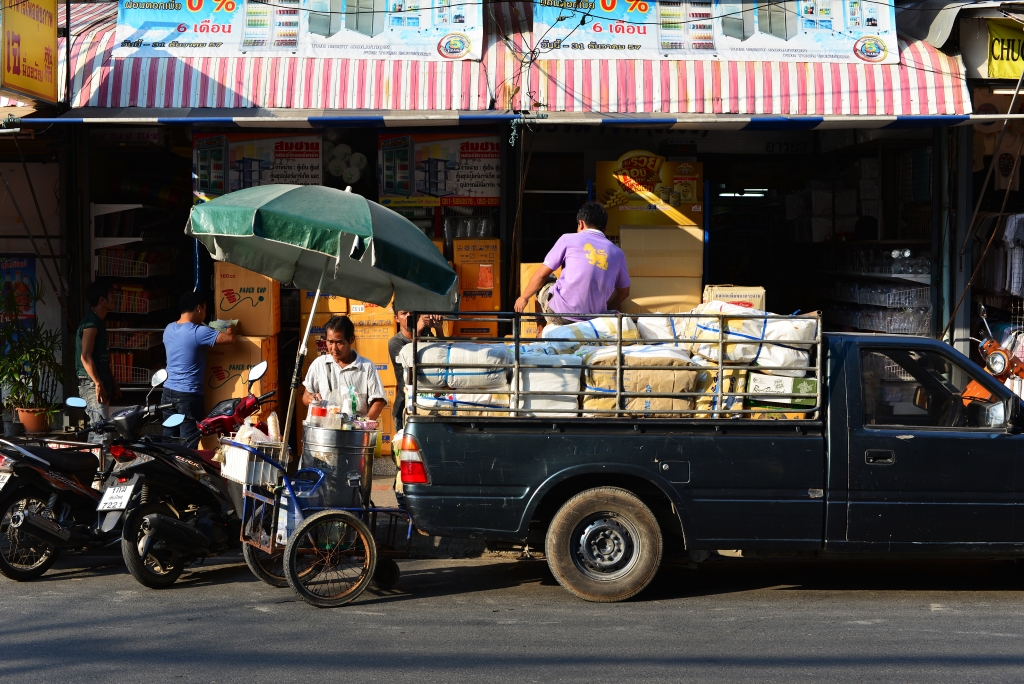
There is certainly no end to the number of establishments you can spend time – and money – in, and if that was what I wanted to do in Chang Mai, then I would be in heaven! Despite the vast numbers of tourists present, their prime motive is not the sophistication of the place, rather, the consumption of a concept. Beyond the cosmetics of the imaginatively designed and culturally-relevant interiors, the product offered falls short.
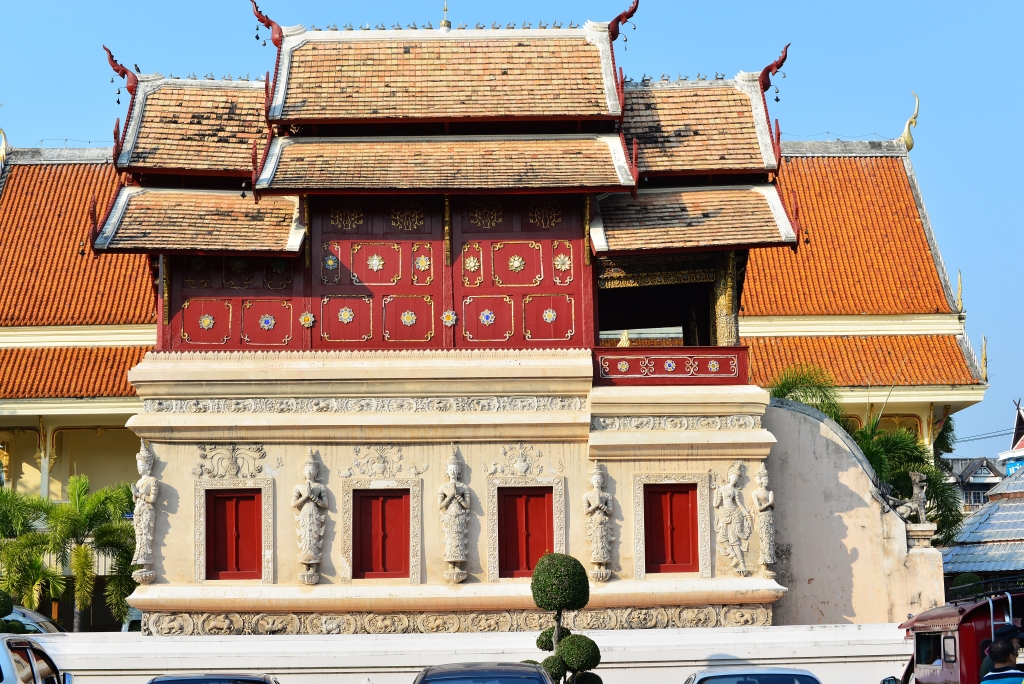
No, I don’t want to eat more fried rice or drink more coffee, and so eastward along Thanon Huay Kaew I go, the narrow boulevard given up to enormous condominium towers and luxury hotels, then a shopping mall enticing for the simple fact that I haven’t seen any in town other than at the bus station when I arrived. Beyond a generic noodle curry at the food court and a fleeting perusal on the first floor, I am outside again and into the darkness, wandering back towards the road that delimits the northern portion of the inner city.

The segments along the north side of the canal are most dramatic of the walls that delimit the old city of Chiang Mai. Segments of the road running the length of the northern canal feature small cafes, restaurants, bars, and further along, a stretch dominated by roadside eateries full of locals and backpackers. I am not really that hungry, but given that are no eateries in the vicinity of my hotel, I should eat here. On the other hand, I am not really motivated to navigate the obscure menus and try to find one of the last remaining tables. From the look of these eateries you may luck on some really great inexpensive food, but then it could also just be unappetizing slop in an utterly uninspiring environment.
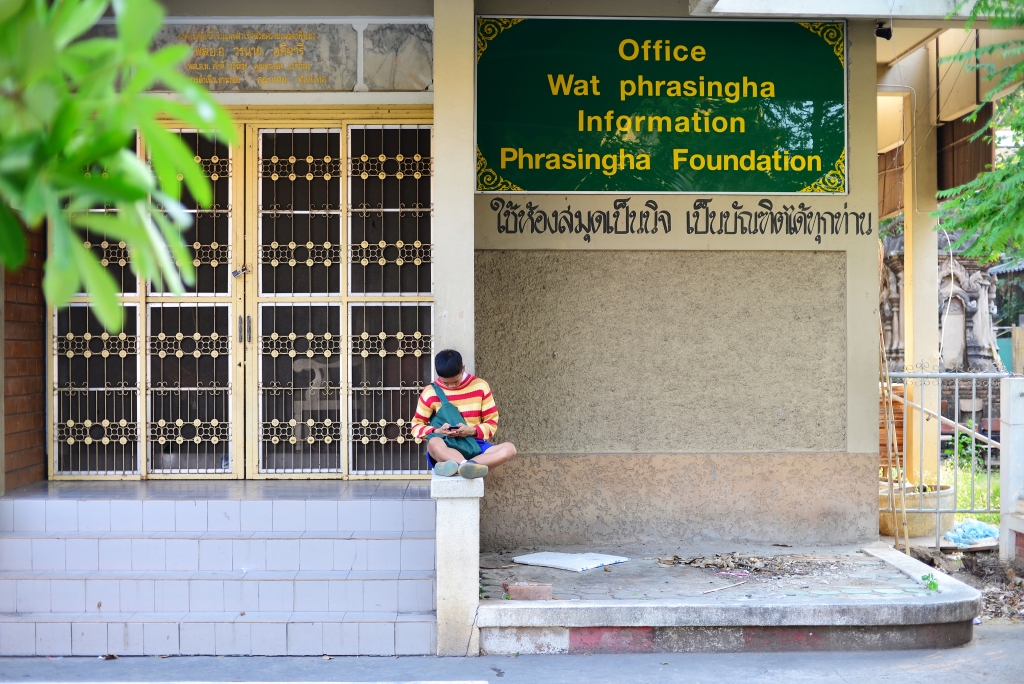
It’s difficult to pass by the eateries without risking getting run over, the usual conundrum of the city, never mind attempting to cross the street. Irrespective of everything else, the endless traffic and air pollution just destroys any desire to be in Chiang Mai. I think Thais are fundamentally respectful drivers, but the traffic controls in no way accommodate pedestrians, without crosswalks or walking signals in place. Peering down the darkened soi I am thinking there must be a much more bucolic version of life in this town that is nowhere near the noise, traffic and toxic air of the main roads. Yet somehow I can’t understand how people would want to here, never mind the plethora of spas promoting health treatments.
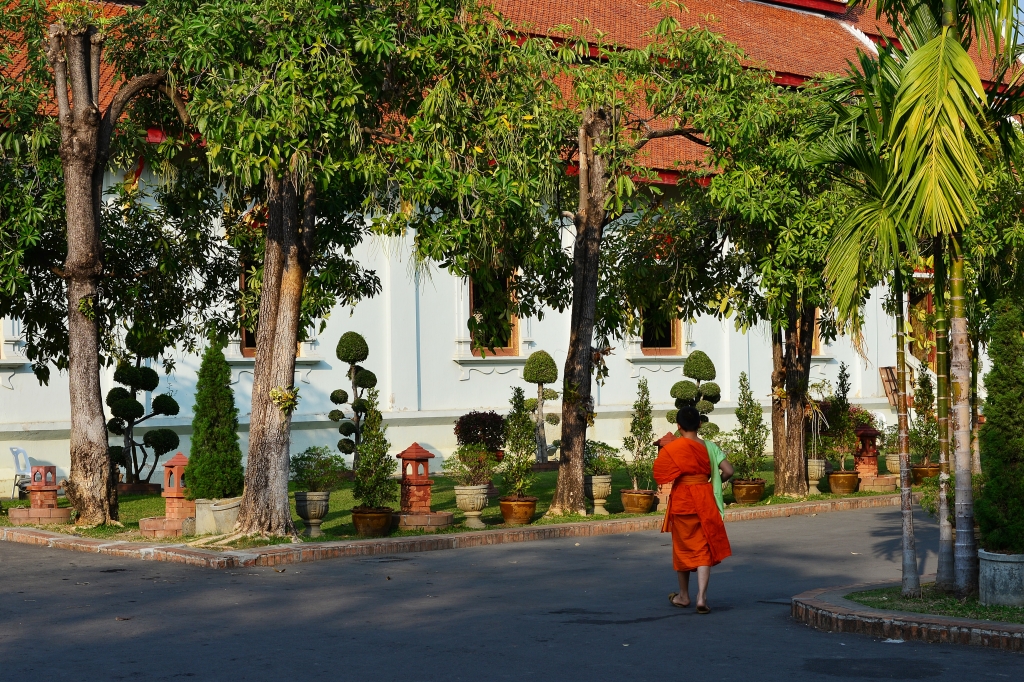
The side road leading to the river looks vaguely familiar, and I hope it will take me in the right direction. Another concentration of market stalls appears, the bright lights of the parallel rows of roadside stalls congesting the length of the block. This must be the Talat Wororat, and if so, I am closer to my destination. I manage a Thai-style roti with banana, but seem to transgress when mentioning the Malaysian roti canai to the headscarved girl. On the other hand, I am simply not motivated to wade through the greasy bland sausages, weird grilled surimi concoctions, cold satay, hastily assembled soups and the usual culinary fare offered at the market.
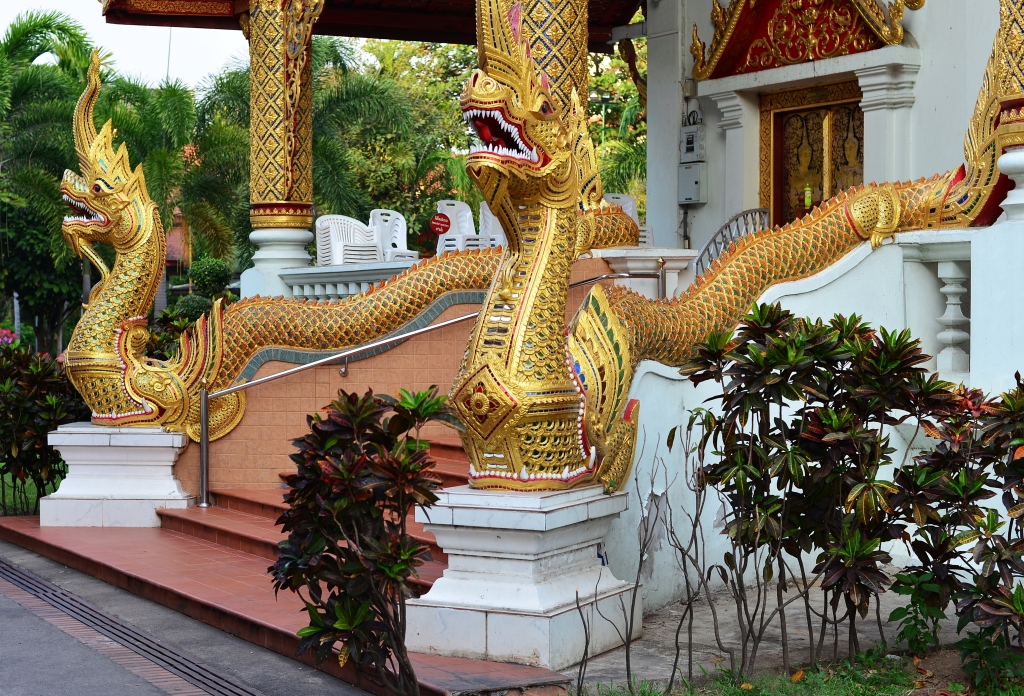
Around the corner and already the Nawarat bridge appears, a recessed treed passage leading to the pedestrian walkway, the bright lights of the larger luxury hotels capitalizing on the atmosphere the river offers, then on the far side, the road to Lamphun running down the east side of the river, past the military base veering away from the water. A handful of small shops line the road, including Dukes and a pizza place with elevated prices which some of the older farang seated near the sidewalk assure me is excellent.
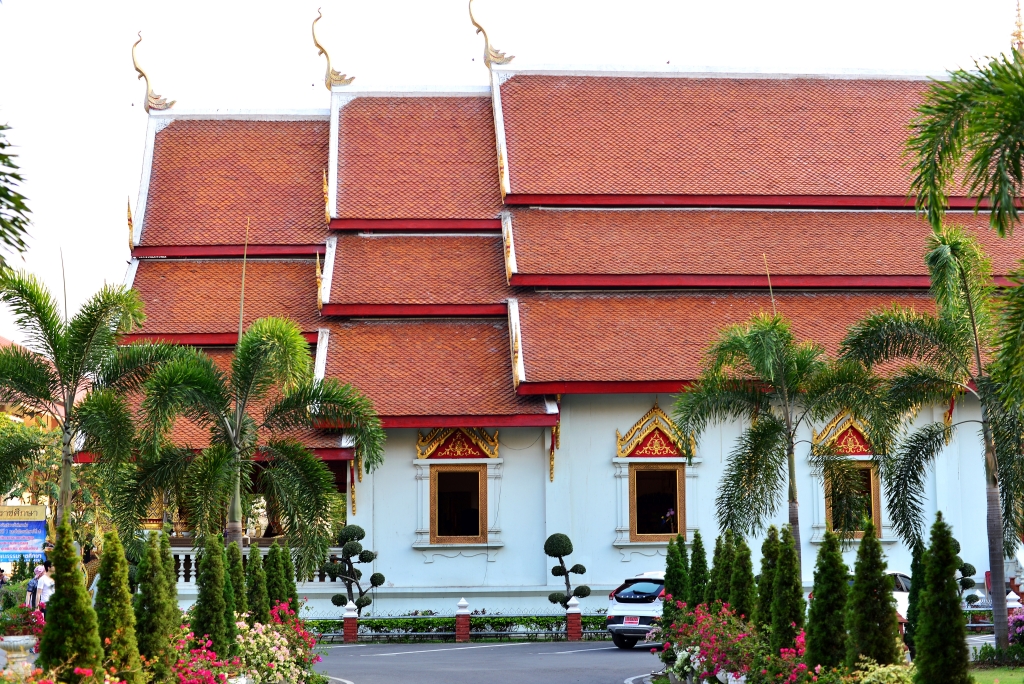
Duke’s I should visit if anything on behalf of the Oklahoman who introduced me to the basics of Chiang Mai, but their prices are really elevated, upwards of 600 baht for a big dish where I am used to paying 30. On the other hand, this is real American food, big on flavour, protein, presentation and calories, and the thick crowd of Americans laying out the cash for the scrumptious menu items can’t be wrong! If I spend another moment in the place I will be sorely tempted to do the same, so best continue onto the dreaded search for transportation options.

The first tuktuk driver I stop wants 150 baht for the trip back to the Adventure hotel, but I pass; I keep walking and eventually the fare drops to 60. Once it gets dark the traffic in taxis and tuktuks drops dramatically, the prices presumably inflating also. I find it amazing that a city the size of Chiang Mai has no formal public transport system, where Bangkok at albeit 10 times the size features an extensive, modern and sophisticated metro network. And here there are not even local buses …
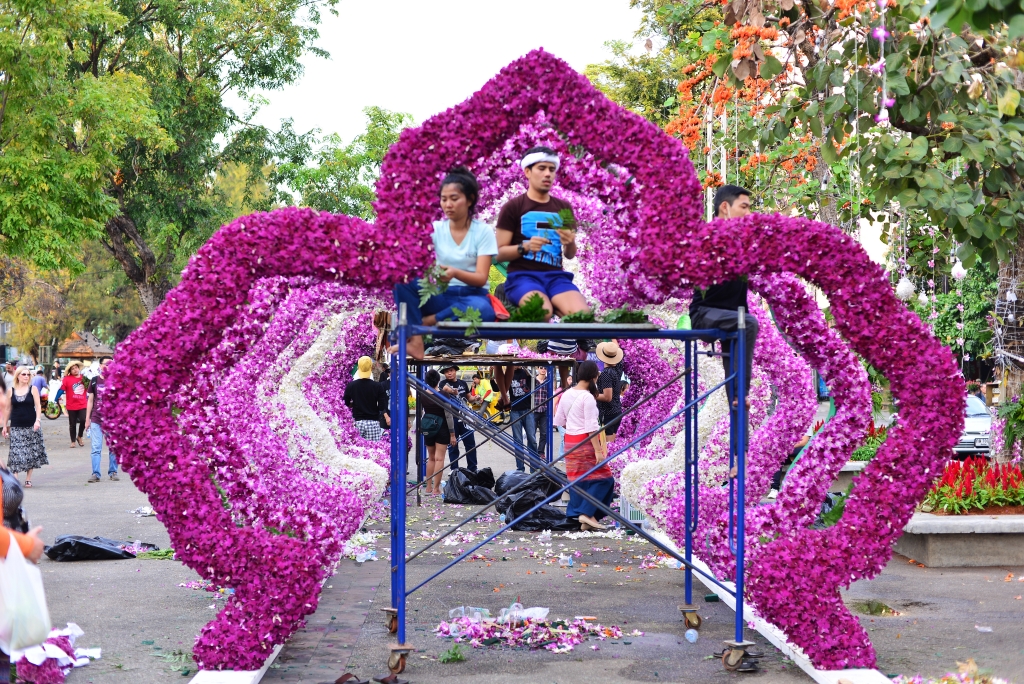
I begin the day much later than usual – is this a common refrain or what? The correspondence, web surfing, foot dragging, journal writing, debating whether I should get a coffee or not, doing onward travel research, feeling depressed due to being stuck so far out of town without the ease of simply popping out to some local sights and calling it a day.

The big operation of the morning involves changing rooms, the variety of room themes an attraction in and of itself in this hotel. I decide on Reflections, a theme that features mirrors covering the entirety of the walls and ceiling of the room, somewhat of 70s-style bordello with a touch of Kubrick. The room is starker but also predictably far brighter, has much better wifi, and features a number of tables and comfortable workspaces. The Jurassic-themed room was darker and much harder to work in, but then it is intended to provide a cave-like setting. A different woman is working at the reception today, although I prefer the other beaming and very helpful receptionist who speaks very good English, and has provided me with some useful information.
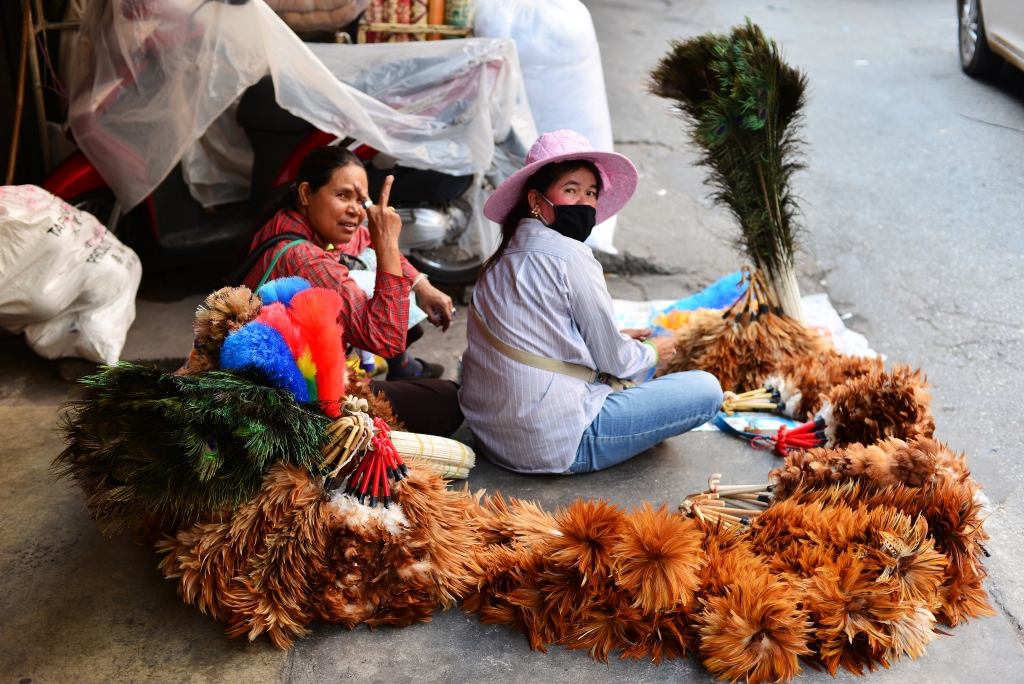
The Flora Festival being held at the Royal Park Rajapruek would be choice as the day’s excursion, but it is located far to the southwest of the airport, and I can just imagine what would be involved in getting there and back, conceiving taking the songthaew as far as the university and then another down to the park, although the venture may also take a lot of faith. The wait for the blue songthaew is not so long, and I am happy to hang off the back of the open pickup along with the much smaller and somewhat bemused Thais.
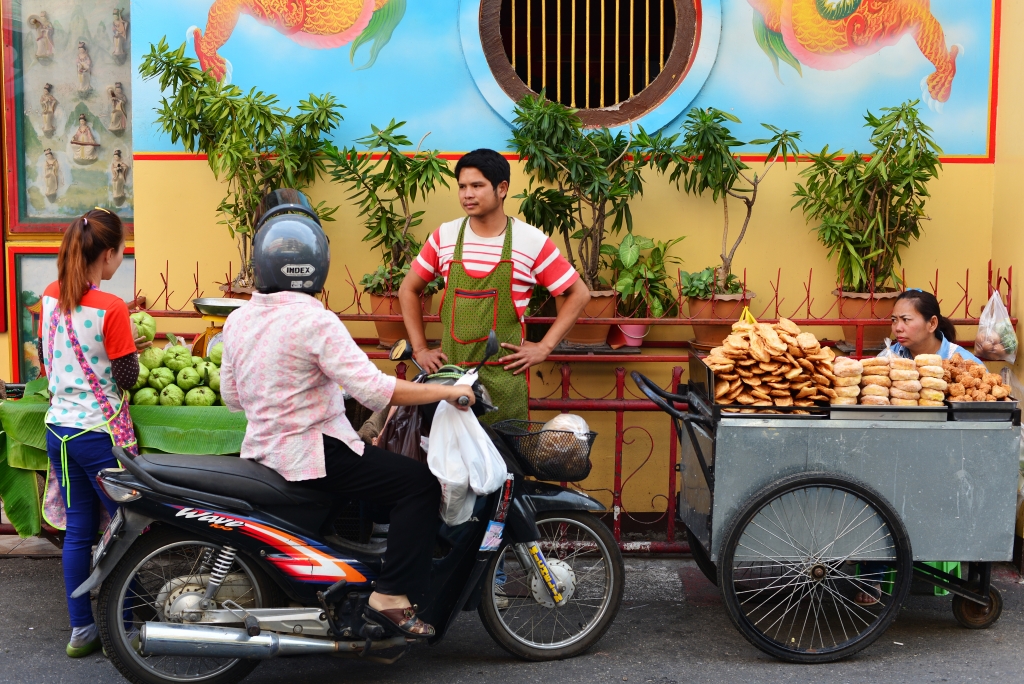
I am dropped off just south of the Nawarat bridge, the driver belatedly passing on the fare since he has no change for my 500 baht bill (what a contrast to the rapacious tuktuk drivers!), and begin walking eastward on Charoen Muang road towards the train station, looking for a blue songthaew but also wanting to get a sense of the area. I see no blue songthaews, only white and red ones, and so I suspect that the white ones are the shared vehicles on this east/west route. The architecture and general ambiance walking eastward is fairly deplorable, grimmer, more dilapidated, and with less redeeming qualities than other parts of the inner city. Sure, it isn’t really much different from the area around the Wororat market, but at least the market area is vibrant and animated.
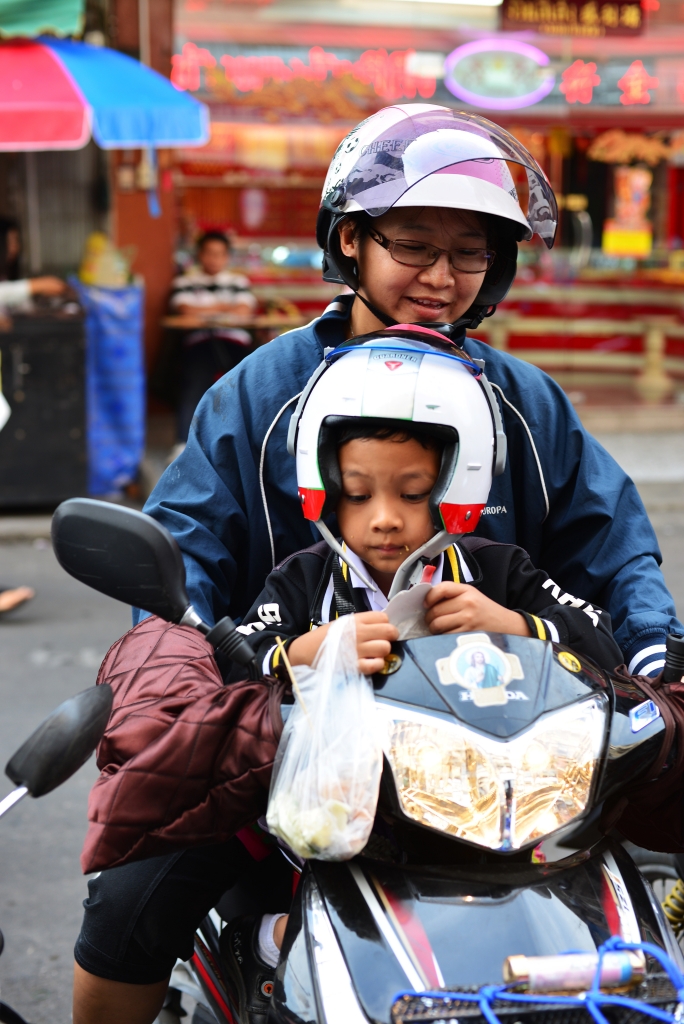
No matter: the post office that appears on the other side of the street is in fact the main post office of Chiang Mai, although it looks more like a branch office, and the variety of philatelic stamps is negligible. But there is little point to my collecting of stamps to begin with, other than the fact that if the stars miraculously align in proper formation someone will inherit my huge stamp collection that actually has some interest in philately. And now I have to write the postcards prior to leaving the country …

A white songthaew takes me all the way to the talat Wororat, descending into melee of vendors and shoppers with my camera in hand, taking random shots of locals, merchandise and baffled tourists. Alone aiming the camera at incongruous subject matter is enough to elicit heartfelt reactions of a positive sort. Incongruous is also the group of heavily tattooed young Caucasians with hairstyle combinations of severely shaved and bleached dreadlocks, torn jeans alternating with leather riddled with graffiti the hallmark of serious metal heads.
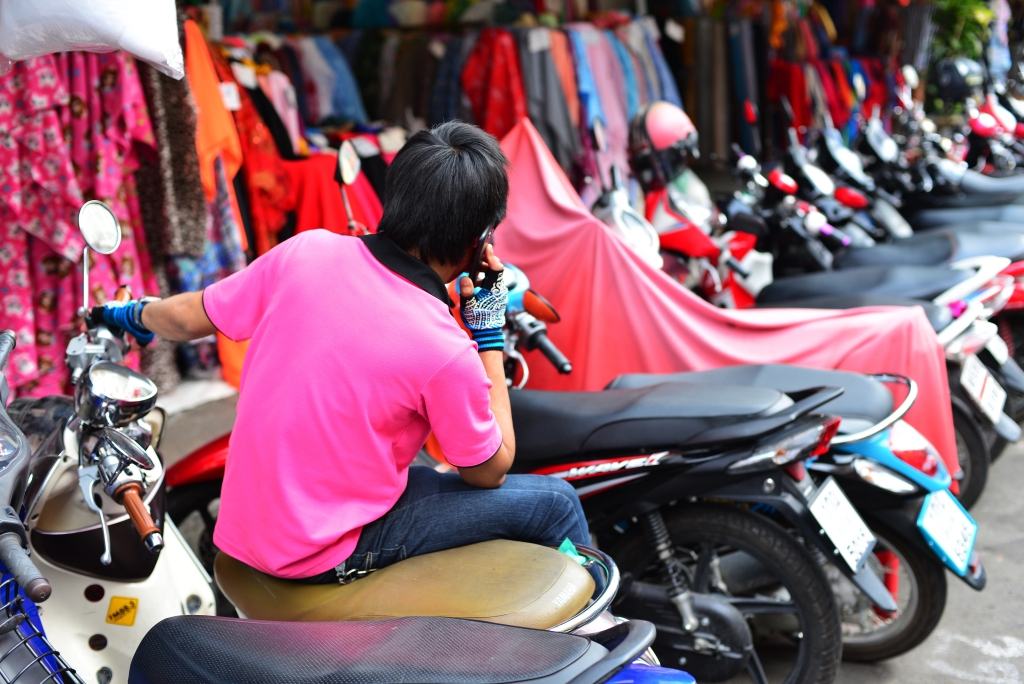
‘You must be Finns’ I ask them pointedly, which they dispassionately nod in affirmation to. They react to my rant about the wonders of their country with a combination of stone faced seriousness and giggling. If central Canadians had something in common with one people in the rest of the world, it would be Finland. And yes, Finland is one of the top countries for death metal …
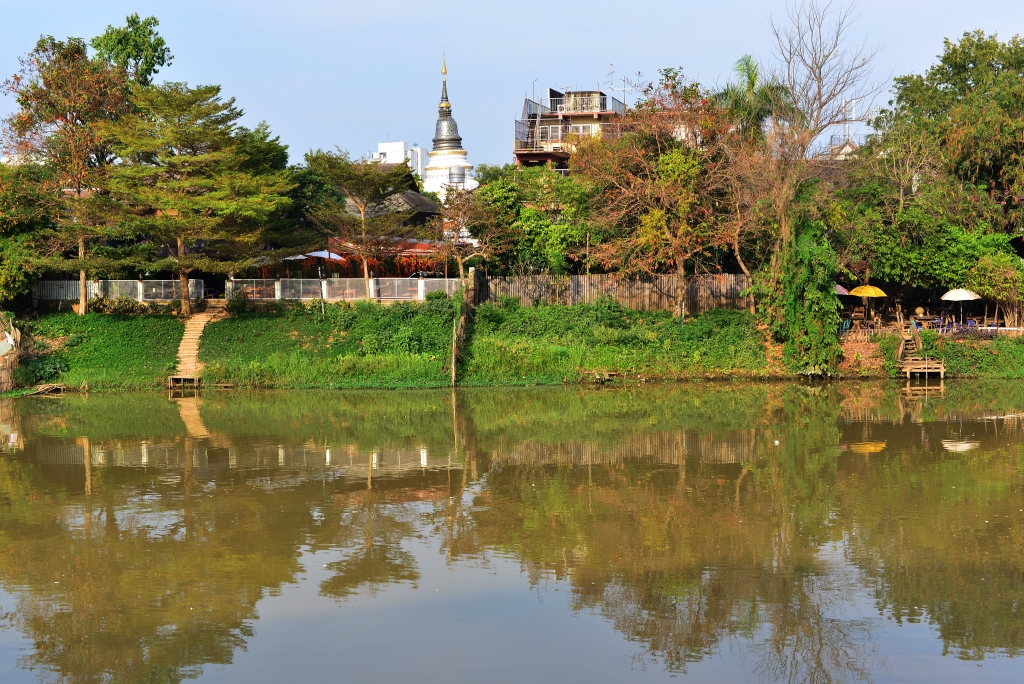
A very different story is told by the older Spaniard from Madrid, originally from Malaga, who is astonished by my passion for his country, just as I am astonished by his claim that Spain is now experiencing considerable economic growth, and in a far better position than Italy and France. As much as there are still substantial political and economic challenges in addition to very high unemployment, Spain is on track again. And yes, Spain is a remarkable country, with incredible history and attractions, sophisticated and vibrant, and with some of the most passionate people in the world.

Letting my own passions get the better of me, I follow along Thanon Ratchawong, mistaking the canal to the left with the canal that delineates the inner city, a right turn taking me confusingly back to the river, the view of which just seems wrong, precisely when I realize that I am facing the Nawarat bridge again. I only realize my folly in retrospect, frustrated if anything at the fact that it is already late in the day and I have done so little. So: no weaving through back alleys to get into the town centre, rather, I head directly west along Thanon Thae Pae past the usual wats towards the Thae Pae gate.
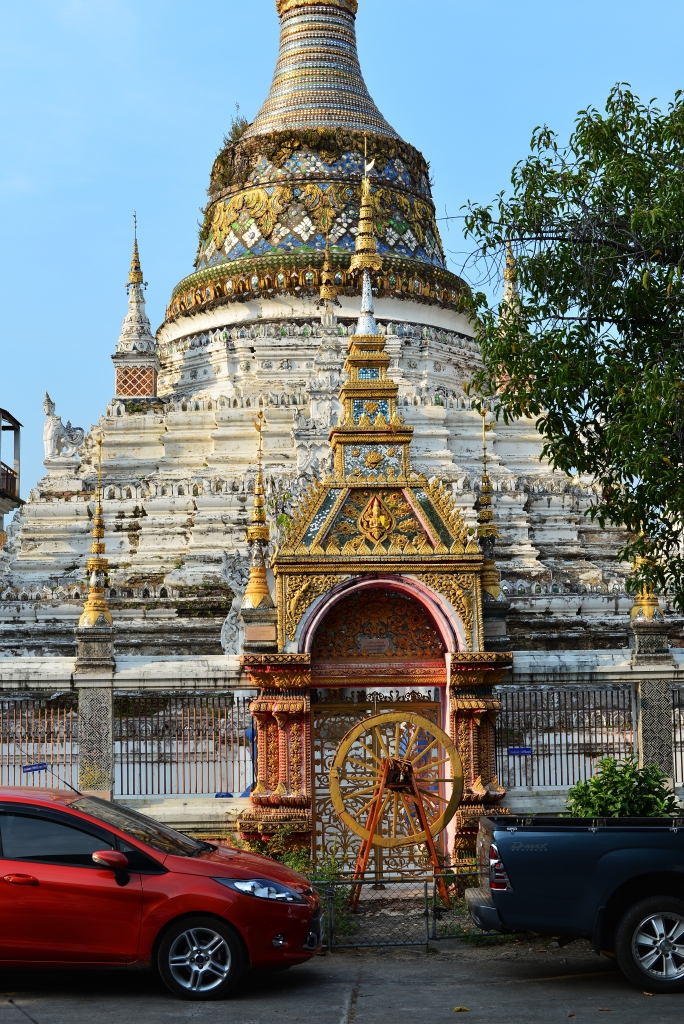
Well, not so fast: the Wat Saen Fang that I had thought was permanently closed to the public is anything but, just that I had earlier on missed the proper entrance. A walled passage leads past two long undulating serpents to the primary temple and layered cream stupa on the left, the vihara’s gables covered in a tapestry of symmetrical gold detailing. Then on to the two opposing temples preceding the Thae Phae gate, Wat Mahawan and Wat Chetawan, the latter’s facades woven in emerald, the characteristic tiered gables crowned with sinuous golden finials, the portals guarded by stone lions.
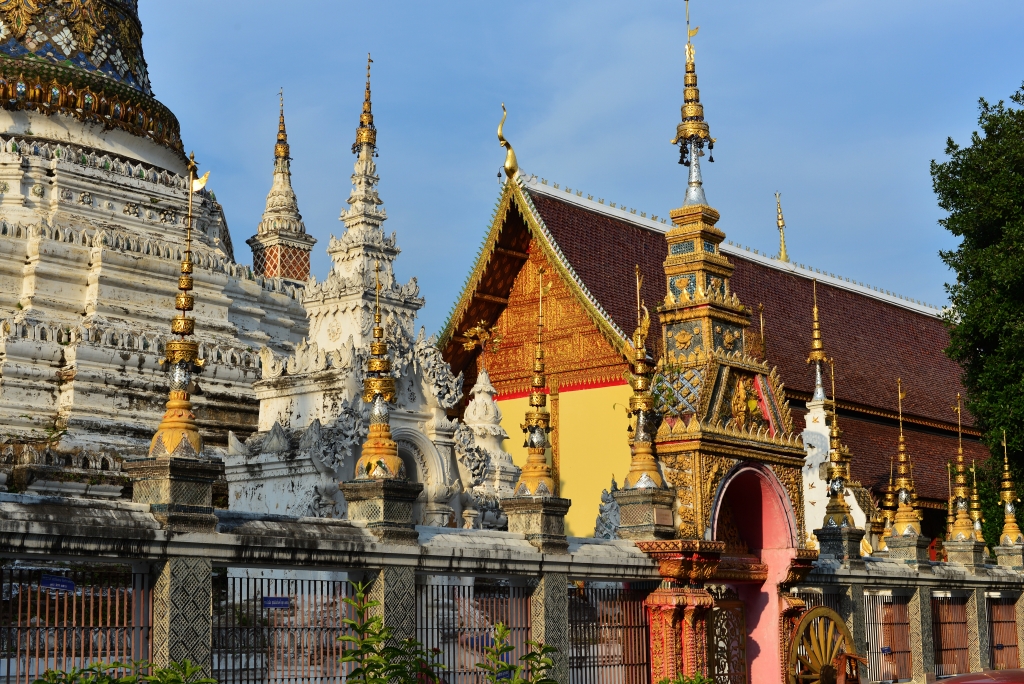
The preparations for the flower festival at the gate have progressed considerably, a series of elaborately shaped arches coated in purple and cream petals now beckoning, yet another subject intended to captivate the hordes of visiting amateur photographers. I continue northward along the canal bounding the eastern side of the inner city, conscious not to veer away and get lost away, the remains of the heavy brick wall segments anchoring the far corner, and then westward, intent on discovering the temples that line the fringes of the centre.

If only – there is very little correspondence between the tourism map, the Lonely Planet guide map and physical reality, not that in the end it would make much difference, as I have nothing to add to the spectacle of the faith-induced architectural extravaganza other than my attempts to not get run over while crossing the street nor incur the wrath of the canine temple guardians. The roadside food stalls cluttering stretches of the northern canal zone have not reached their full momentum, only barely at this point, the cooks manically stirring, cutting, flinging. And yet their captive audience already occupies the majority of available tables.
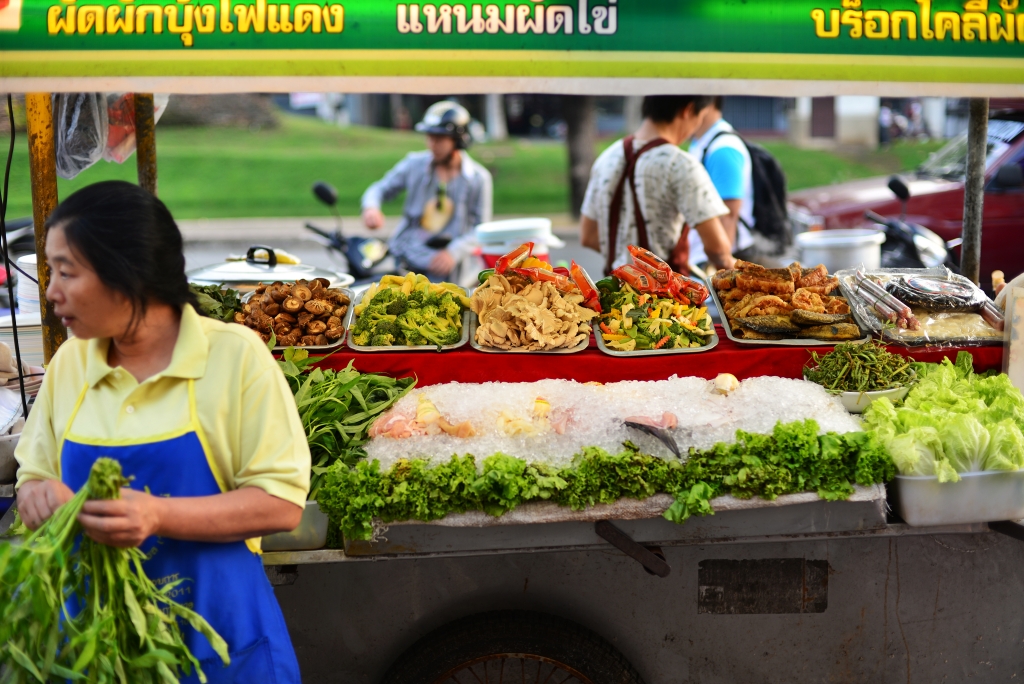
I could stop off and eat, but the light is falling, and I haven’t even begun to get my obligatory temple photos done for the day. The young Flemish couple ahead of me progresses from the golden extravaganza of Wat Kuan Kama to the much older Wat Lok Molee across the water, with its fading brick stupa reticent to the rear of the grounds. ‘Watch out for the dogs’ I tell them, ‘When dusk sets in the otherwise docile creatures begin finding reasons to attack’, much to their chagrin and surprise.
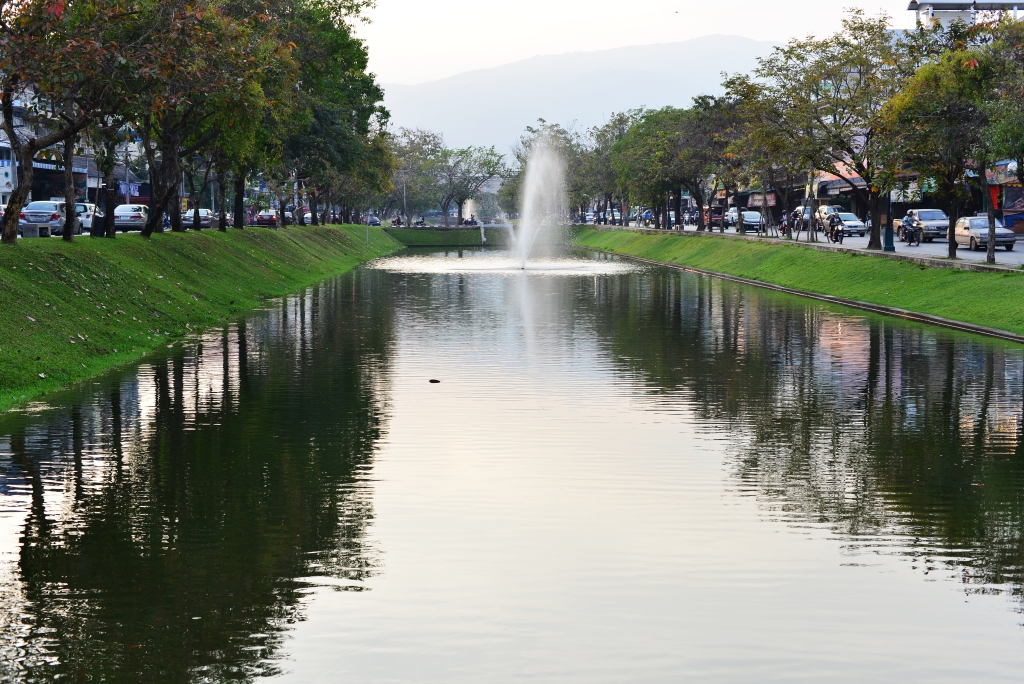
Golden serpents encase the pediments cresting doorways and windows, the filigree detailing golden and hallucinatory, the traditional Lanna structures in stolid dark-stained teak, symmetrical patterning exercises in restraint when set against their modern counterparts. Oblivious to the mesmerized tourists the orange-clad monks kneel inside, following the amplified voice of their mentor in prayer.
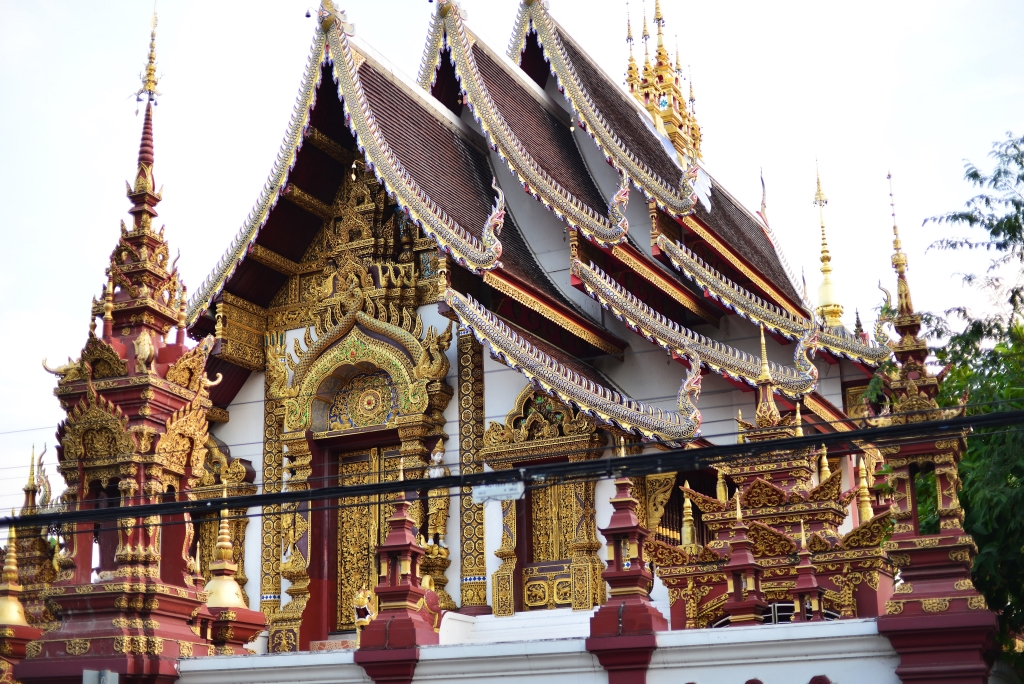
And now for the final stage of this belated venture into town, a journey through the small alleys that traverse the centre of Chiang Mai spanning the east-west axis, and located towards the northern portion of the canal I have just come from. Small eateries, fashionable boutique hotels, minute shops, loitering dogs, the falling light revealing little of note, although a greater serenity befits the quieter enclaves leading to the Wat Chedi Luang that marks the heart of Chiang Mai.
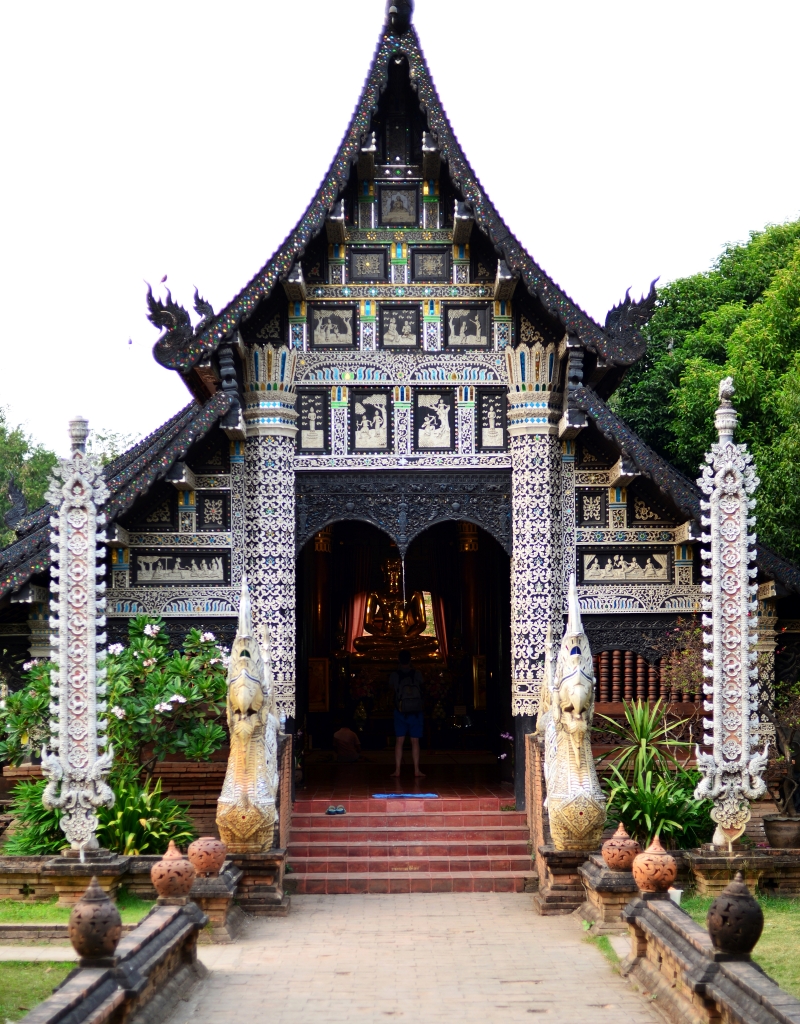
At the western canal, I descend into the torrent of cars, and then further to the south head eastward again, along Thanon Inthawarorot with its much more consciously fashionable hotels and trendy hostels, a greater number of backpackers and more moneyed tourists visible on the road as on the tastefully appointed terraces, my own surreal themed motel light years away in style as in proximity from this privileged enclave.
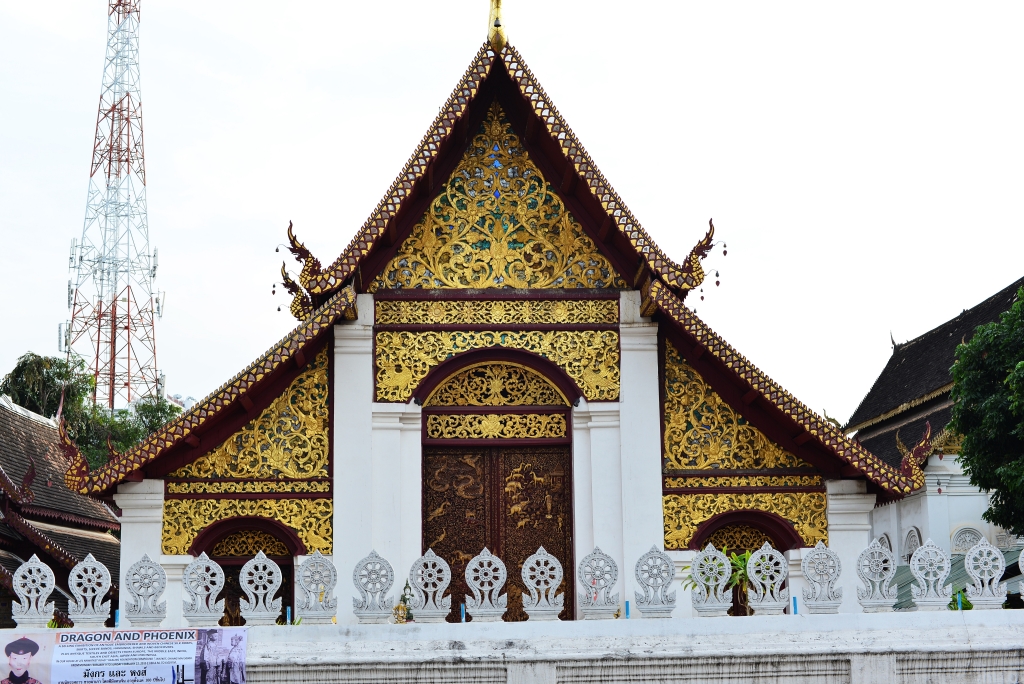
As much as I could be consumed by frustration again at my bad luck at having landed so far out of town with this bounty of quality accommodation available in every price range, at least I could make a note of the places that do stand out and select one of them on any future visit, not that I have the remotest intention of returning to Chiang Mai again. However, as debilitating the traffic and noise and uninteresting as the rest of the city may be, this quarter’s beauty and serenity clearly speaks to the visitors, however contrived it may be.
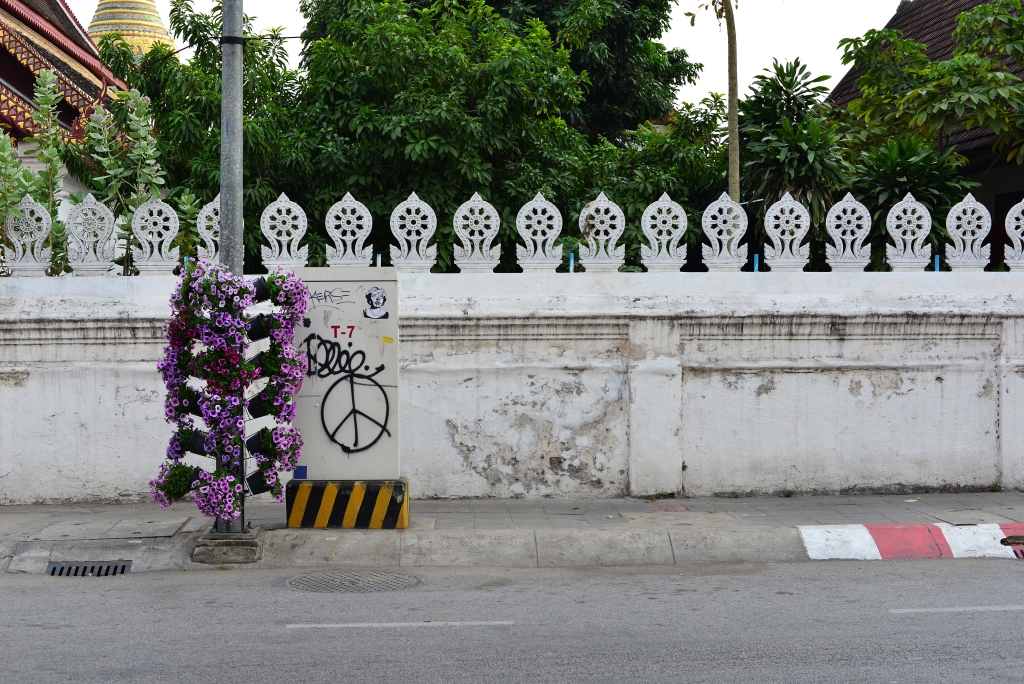
Deeper into the centre, the beating heart of touristic Chiang Mai emerges, with its concentration of backpacker hostels and lower budget pseudo-boutique hotels, an insular world of leafy rustic cafés sandwiched along the narrow road, promoting a romantic and largely synthetic snapshot of Thailand to the scruffy younger Caucasian backpackers and older men, checking another escapist vision of paradise from their list, the somewhat moneyed tourists from China in the same area but populating the more luxurious accommodation. It all ends at Thanon Phraplokao, a broad plaza opening up to the Chiang Mai Cultural Centre and Lanna Folklife Museum, Thanon Ratwithi passing through the nocturnal backpacker idyll of American-style restaurants and bars, generic, without distinction, and catering largely to the drinking crowd.
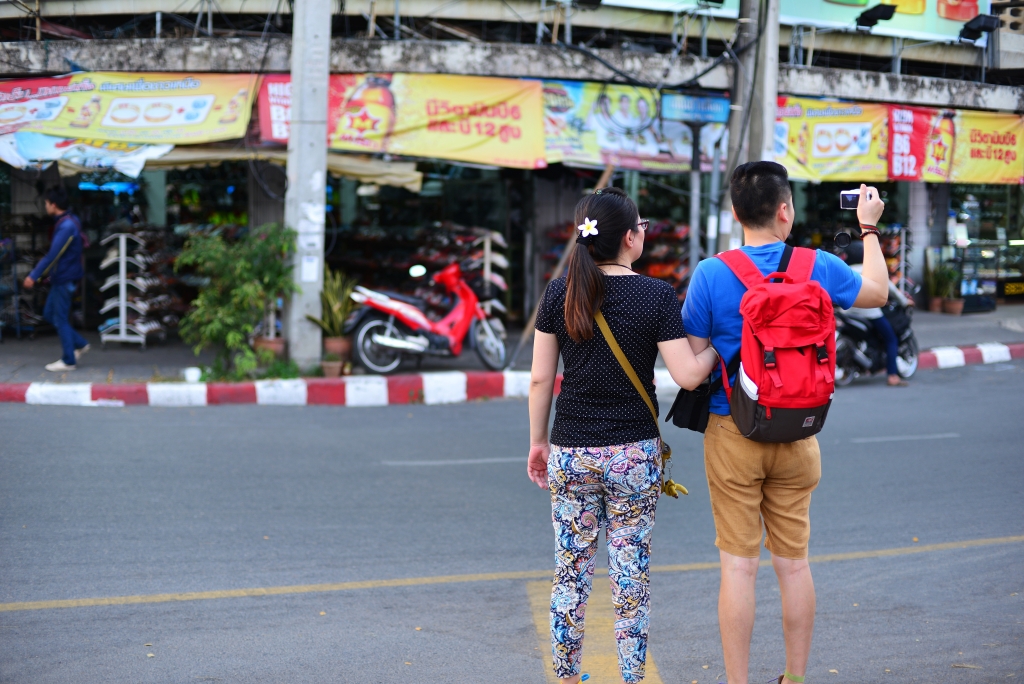
The modest outdoor Thai eatery on Thae Phae road is the last franchise prior to the Narawat bridge, and once on Lamphun Road on the east side of the bridge, there are only the few pricier western establishments, the roadside eating stalls much further to the south. There could be a night market in the direction of the post office, but I am not about to find out. So good, bad, expensive or not, I decide to eat at the Hug Me (no, that can’t possibly be the name of the place!). Confused-looking, stray backpackers and tourists at large slow down and stop in front of the restaurant, not sure as to whether they should eat here, whether they should eat in the first place, or perhaps where they even are.

The Russians at the table next to me loudly inform the Thai staff that under no circumstances should their food be spicy. I am thinking that Thais would find Russian vodka similarly challenging … Waiting for my food, I deliberate on how I could spend the next few days in town, admitting to myself that I have at least half-heartedly seen the better part of the centre, not that I tried too hard.
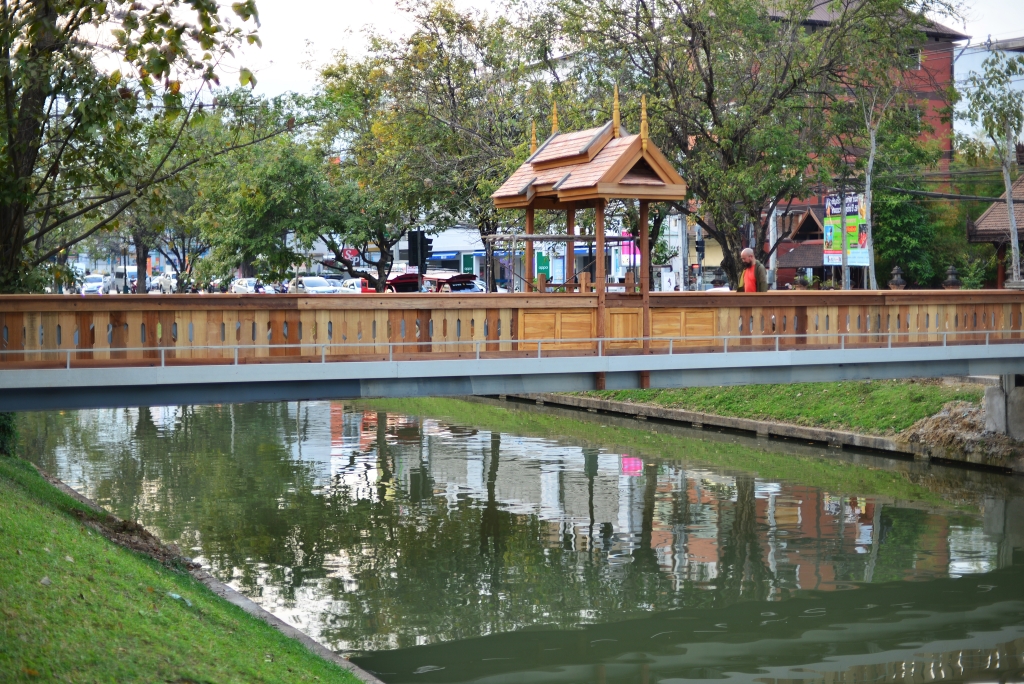
According to the Lonely Planet, there are a number of museums of importance located mostly in the central area that I could focus a day on. Lamphun to the south would warrant a full day visit, and would require leaving early, given the fact that the blue songthaew finish in the late afternoon. I can’t imagine there not being regular buses that pass through Lamphung to Chiang Mai, although on the other hand, the Arcade bus station is far out of town. An attractive national park located to the northwest of Chiang Mai is apparently worth visiting, although this would also require a very early start to make sure I can get back to town. Package tours are available that bundle river rafting, jungle trekking, elephant trekking, and visits to hill tribes all in a single day, which would be worthwhile if only for their predictably farcical nature.
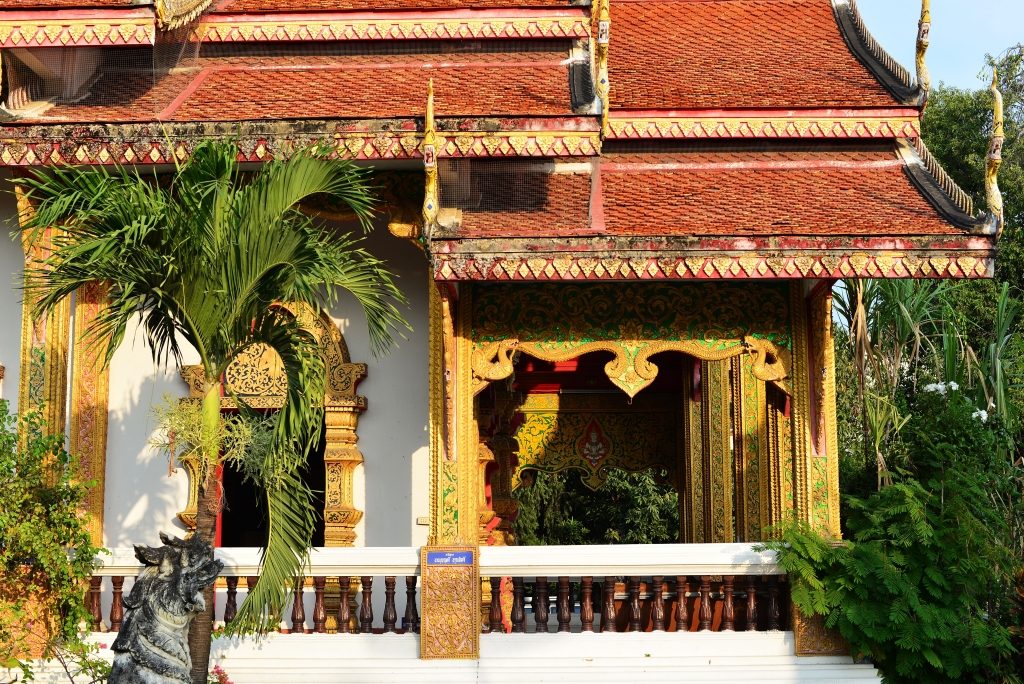
I position myself at the S&P plaza just south of Dukes, and begin flagging down tuktuks. One after the other, the drivers want a lot more money than what should the going rate, two drivers insistent on 150 baht, and two drivers easily dropping the fare to 100, although the real fare should be sooner around 60 baht. I can see paying up to 80, but have little sympathy with drivers who go far beyond the acceptable. I begin walking, the time I spend attempting to get an acceptable fare both discouraging and a simple waste of time.
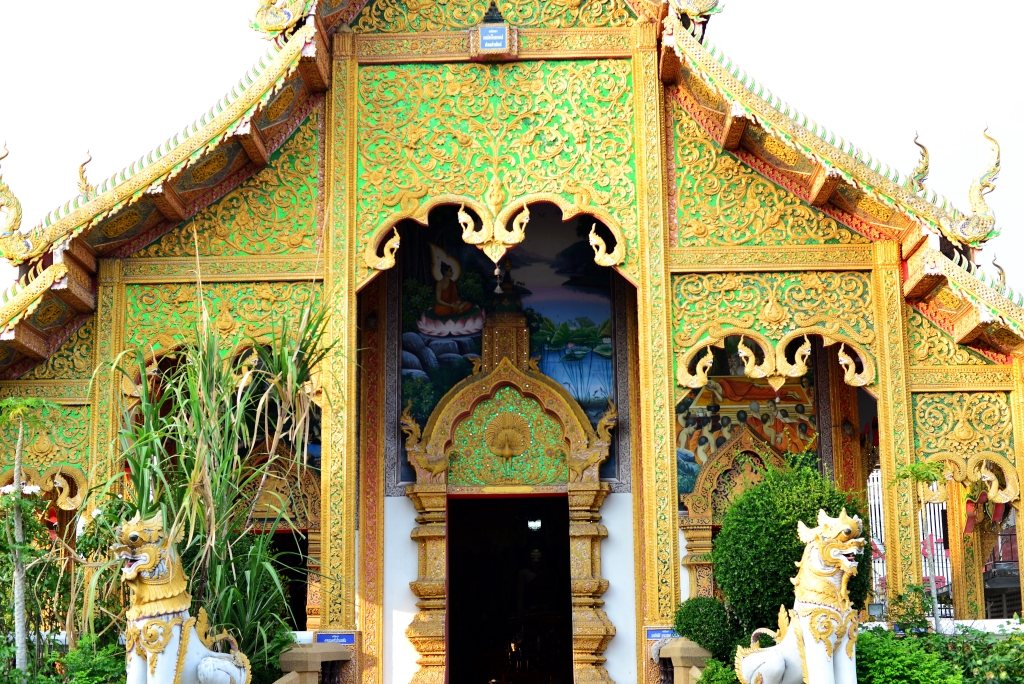
One last attempt a few paces further with a driver who flags me down, beginning at 100 baht, then gradually on his own dropping to 60 baht. Yet at the end I tell him the fact that the fundamental mentality of cheating tourists precludes me from using his services – I just find the whole experience offensive. He motors off, yelling a vindicating ‘Fuck you!’ after me, which is pretty much what sums up my perception of tuktuk drivers throughout South- and Southeast Asia.

And then there are so many tourists on short jaunts to Thailand here that really don’t begin to take the long view on costs that I do. The average traveler probably pays no attention to the fares they are being charged. In any case, the walk is really not that debilitating, and in fact, mildly invigorating. As long as my walking shoes don’t present too much of a problem, I can and will walk as far as necessary. And the walk back to the Adventure hotel has its interesting moments, passing by the occasional clusters of roadside stands, incongruously place Thai-style bars, the big girly locale, and the military base.

